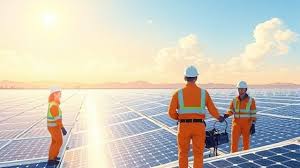Column
They Have Not Changed (Part 1)
Two years ago I wrote the following lines; which I see as imagery of the present realities.
A dog barks, it does not mew like a cat.
The lizard does not look like a snake. Values are inherent, no one acts differently away from innate natural traits. Though nurture can make a little difference. A wicked man ends up a wicked politician, so does a childish person become childish in power. These men don’t shock me with their drama of the absurd. I simply laugh, laugh at them.
Frankly speaking I no longer laugh at the sordid absurdities that we see in the polity today and at global level. No critical mind will dismiss the level of apathy and insensitivity that define the leadership of this country at all levels especially at the centre, which in the words of W. B. Yeats, many say, can no longer hold. It is a centre that generates wider hiatus on daily basis between them and the rest of US. The country is getting more divided today than ever before.
I no longer laugh at the acts of inhumanity and ineptitude that litter every policy and policy implementation in Nigeria. Nothing has changed and nothing may change soonest. We only get used to living with low circumstances; they never change. The failure of governance is predicated on the leadership and political actors. How can a leadership which did not prepare for any form of change, change anything?
No political actor can offer what he does not have. A man can only perform within the capability and capacity of his natural psycho social endowments.
In the recruitment of leadership a lot needs to be taken into consideration. Many have suggested in the past that all prospective seekers of elective offices and appointment should undergo psychiatric test to determine their emotional stability or mental health. In this context, it is no longer enough to set up screening procedures and templates that should determine the suitability of an office seeker into a position of trust. So many, have passed such tests at the level of academic qualifications and a clean slate, in terms of health, or the level of corruption index and other yardsticks.
However, the most important check in the recruitment of persons into political office should be a look at the antecedents’ of such persons, with respect to previous engagements in public and private life. This is important because people do not change overnight in character and political ideology.
The present administration in 2014, after the formation of a mega party which became A. P. C in 2015 promised to chart a departure from the ruling P.D.P. , if elected to power. They came with the mantra CHANGE.
Today, Anne Enright has been justified in her postulation that “people donot change, they are merely revealed”. Part of the change campaign promise was to change the security situation in Nigeria, with emphasis on eliminating the terrorist movements in the North East. The revelation today is that the terror in that region has gotten worse on daily bases and other groups like killer herdsmen and bandits have been emboldened in their savagery and murderous movements across the country.
Nothing has changed in the economy and security. Apart from Boko haram insurgence, West African brand of the militant jihadists now exist here. The naira to the dollar in terms of exchange rate has reached a ridiculous interplay, such that the naira may degenerate into the same abyss as the Zimbabwe currency, God forbid.
Fuel price is ridiculously very high at 170 Naira per litre. The litany of failed promises are many and varied. Let us pause to think if we didn’t expect this, judging from the antecedents of the present leadership.
The man who is at the saddle today, President Muhammadu Buhari was here in 1984. Many can recall his policies which were anti people. How can we forget in a hurry Decree Number Two, which led to several human rights abuses.
He was the Military Head of State whose “Austerity Measure” led to what many of us who were undergraduates then referred to as scramble for essential commodities.
How can Nigerians forget the scramble for milk, sugar, soap and detergents etc. The recent search for onions in the South South is nothing compared to the scramble for essential commodities in those unholy years, all thanks to that regime with the same man in the saddle today.
The transformation of the President to a democratic leader has not changed anything. He merely removed his military robes. Those who brought about this dispensation expected a change. They matched the streets condemning the Jonathan administration. Where are they today? A Leopard does not change his spots.
Albeit Einstien was right when he said that “intelligence is the ability to change”. May I add that only those who are prepared to change, can change themselves before they can change society.
By: Bon Woke
Column
Are the Bears Wrong About the Looming Glut in Oil?

Column
Renewable Energy Faces Looming Workforce Crisis

Column
Is It End For Lithium’s Reign As Battery King?


